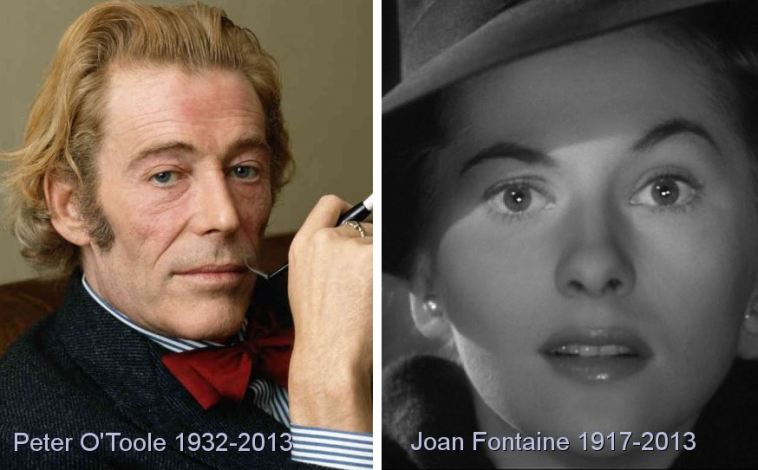I was fortunate as a young child to be spared the undying mindlessness of Pokémon cards and Britney Spears, thanks to my mother and father. In place of Japanese cartoons and teenage pop stars, I got black and white movies. When Peter O’ Toole and Joan Fontaine died this weekend, it made me pause and reflect on two titans of the entertainment industry whose names may soon be forgotten. Sure, in a perfect world everyone would still hold paramount reverence for the names of yesteryear — this, however, is unlikely to ever happen.
Videos By Rare
I can’t say that Fontaine and O’Toole changed me; that distinction is reserved for the late James Cagney. What I can say is that these two great actors had an impact on me — their diction and words joining their physical presence and beauty in sticking to the mind of a young child.
For O’Toole, like many, my introductory film was the great “Lawrence of Arabia.” The film, released when my father was 12-years-old, was — when I rounded the same age — treated with similar excitement and momentum given other major Hollywood pictures. My initial memories of “Lawrence” concern its magnitude. I had never once seen a film so grand, so beautiful with so many people working toward a single purpose.
At nearly four hours long, it took me a few sittings to complete the film and, after doing so, I immediately ran to the library to read everything I could about T.E. Lawrence. That is the main difference between films of today and yesteryear; the films of the past, quite simply, made you want to learn. From “Lawrence” I moved on to “A Lion in Winter,” another massive film filled with dialogue I didn’t understand. As Henry II, O’Toole was a giant, exuding a bravado and gusto that had been missing in “Lawrence.”
Again, because of these films, I ran to the library in search of an understanding of the origin of what I had just seen. Unlike Fontaine, Mr. O’Toole kept very active throughout my life. It was quite sad to see him grow old and to hear that wonderful voice grow tired with age. His appearances in more recent films like “Troy” or “For Greater Glory” always added a certain gravitas and perfection to what might otherwise be weak films.
It is sad to think that many will remember O’Toole not for his contribution to film, but for his legendary drinking and womanizing habits. Regardless of the man’s cloudy personal reputation, Peter O’Toole was larger than life or, as he put it in “My Favorite Year”….
“I’m not an actor; I’m a movie-star!”
While Hollywood was quick to memorialize O’Toole’s death, the passing of Joan Fontaine squeaked by with little more than a New York Times obituary. Fontaine, the younger sister of actress Olivia de Havilland, had not appeared in a film since 1966. Even many in my parents’ generation would be hard pressed to pick the classic beauty out of a lineup.
Fontaine reached the peak of her cinematic endeavor before World War II was over. As leading lady to Cary Grant in “Suspicion” and “Gunga Din,” Fontaine personified the classic beauty of the 1940s. I was never particularly fascinated with Fontaine’s films, though I always marveled at how unique and beautiful she was.
As the 21st century rages on, there are not many giants of industry left. Actors like Al Pacino and Dustin Hoffman still work regularly, but do not command the same presence as someone from the golden age. The world has lost two titans of their craft, and I sincerely hope that people continue to watch their films and discover what giants look like.
Hold back your tears.
http://www.youtube.com/watch?v=KEGoH5QcnEg
http://www.youtube.com/watch?v=lRjITqahTbA

